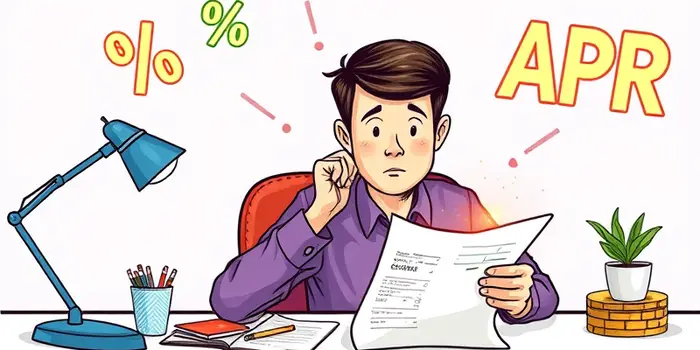
Understanding your credit card's APR is crucial before you decide to carry a balance. The annual cost of borrowing money directly affects your financial health, and knowing how it works can save you hundreds or even thousands of dollars over time.
Every credit card user should take control of their finances by learning the fundamentals of APR, the fees it includes, and strategies to minimize the interest you pay.
APR stands for Annual Percentage Rate, representing the cost of borrowing money on your credit card over a year. It includes both the interest rate and certain standard fees associated with the card.
The APR is expressed as a yearly percentage and shows how much extra you pay if you carry any balance past your due date. Note that not all fees—like late payment charges—are rolled into the APR, so reviewing your card agreement is essential.
Credit cards typically feature multiple APR categories, each applying to different transactions. Being aware of these types helps you avoid unexpected costs.
Additionally, APRs can be fixed or variable depending on terms. Fixed APRs remain stable unless your issuer notifies you, while variable APRs fluctuate with market indexes.
Several factors influence the APR you receive when you apply for a credit card. Understanding these can guide you toward better offers:
Credit scores matter: higher credit scores generally qualify for lower interest rates. The type of card also plays a role; rewards cards or cards for rebuilding credit often have higher APRs. Finally, market conditions for variable APRs tie your rate to benchmarks like the prime rate, causing it to rise or fall over time.
Your individual financial profile, including income, existing debt, and payment history, also plays a role. Lenders price risk into their APR offers to safeguard their investments.
Interest on credit cards is commonly computed on a daily basis. Your APR is divided by 365 to determine the daily interest rate you owe on outstanding balances.
For instance, a 29.99% APR results in a daily rate of approximately 0.0821%. Each day you carry a balance, interest accrues on both the principal and any previously accumulated interest, a process known as compounding.
Because transactions and payments can occur throughout the billing cycle, your actual monthly interest may be calculated using an average daily balance method.
Most credit cards offer a grace period on purchases, giving you time to pay off new charges before interest accrues. However, if you carry a balance from one month to the next, you typically lose this benefit.
Without a full payment, the grace period is suspended immediately, and new purchases begin accruing interest at your regular APR until you bring the balance to zero.
Understanding and leveraging grace periods can help you avoid paying interest on new purchases and maintain greater control over your finances.
Your APR may incorporate certain mandatory fees, but not all. Common inclusions are the interest component and the annual fee charged by many cards, while fees such as cash advance charges or late penalties usually sit outside your APR calculation.
Reviewing fee disclosures ensures you know exactly what costs are built into your APR and which ones will appear separately on your statement.
Reducing the interest you pay can have a profound impact on your debt repayment timeline. Consider the following approaches:
Implementing one or more of these strategies can dramatically lower your borrowing costs over time.
By law, credit card issuers must clearly disclose their APRs in all marketing materials and card agreements. This includes stating both standard and promotional APRs prominently.
Regulations require that periodic and annual rates be expressed as APR, offering you a standardized metric for comparing credit offers.
To stay ahead of rising costs and unanticipated changes, follow these practical tips:
By combining knowledge of APR mechanics with disciplined financial habits, you can transform your credit card from a potential pitfall into a powerful tool for convenience and rewards.
Understanding APR is about more than just comparing numbers. It empowers you to make informed decisions, avoid hefty interest charges, and take control of your financial journey. Armed with this knowledge, you can approach credit cards with confidence, choosing the best offers, and managing your balances for long-term success.
References













